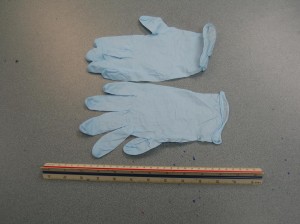https://www.youtube.com/watch?v=yANIfjow8SE
Hepatitis means an inflammation of the liver. It can be caused by harmful chemicals or infectious agents. These infectious agents cause damage and inflammation of the liver that can be transmitted via fecal-oral route or sexual, parenteral, or perinatal route. The disease comes in different types, requiring various forms of treatment approach and management.
The material posted on this page on management of hepatitis is for learning purposes only. To learn to provide aid to individuals with hepatitis, including how and when to use barrier devices, enrol in first aid and / or CPR courses here.
Hepatitis Transmitted by Fecal-Oral Route
Hepatitis A

Hepatitis A is an infectious disease that is often acquired from contaminated food and water. It results to acute hepatitis with no persistent state as compared to blood borne hepatitis viruses. Initial symptoms include fever, body malaise, jaundice (yellowish coloring of the eyes and skin), nausea, and vomiting. Hepatitis is self-limiting within 1 to 3 weeks.
Proper hand hygiene, particularly of workers preparing foods is really important in the prevention of hepatitis A. Frequent hand washing should be done to prevent transmission of the virus. Treatment is symptomatic, including adequate hydration for fluid loss, bed rest, adequate nutrition, and antipyretic for fever. Immediate reporting and intervention should be done for suspected cause from water treatment facilities. A vaccine, called Havrix, is available for hepatitis A.
Hepatitis E
Hepatitis E is another infectious diseases caused by a viral infection that can be acquired from contaminated food and water through fecal-oral route. It is usually common in Asia, Africa, and the republics of the former Soviet Union. It is suspected for persons who has symptoms of viral infection but has negative serology for other hepatitis viruses.
Treatment of hepatitis E is the same with hepatitis A. Emphasis should be given at frequent and thorough hand washing, especially after defecation to prevent transmission.
Parenterally and Sexually Transmitted Hepatitis Viruses
Hepatitis B
Hepatitis B is the virus that is frequently studied because of its high prevalence. It is an infectious disease most frequently transmitted perinatally from an infected mother to infant in endemic regions such as the Arctic, Africa, Southeast Asia, China, and the Amazon. On the other hand, in developed countries such as the United States of America, parenteral and sexual routes are the primary mode of transmission.
The symptoms of hepatitis B include fever, rash, jaundice, arthritis, abdominal pain, and nausea. Hepatitis B has been reported to have a mortality rate of 10% as it may result in liver failure and encephalopathy.
Treatment of hepatitis B includes:
- Bed rest with restriction of activities
- Adequate nutrition, particularly rich in proteins
- Use of antacids and antiemetics for abdominal discomfort
- Hospitalization for fluid therapy for vomiting patients
- Avoidance of alcohol
- Hepatitis B vaccine is available and active immunization is recommended to prevent occurrence of the disease.
Hepatitis C
Hepatitis C (formerly known as non-A, non-B hepatitis or NANB hepatitis) is at high risk for persons receiving frequent transfusions especially from paid or commercial donors. Symptoms of hepatitis C are usually similar to hepatitis B in a milder form.
Hepatitis D
Hepatitis D virus (delta agent) is believed to be dependent on the hepatitis B virus for survival. It is suspected in patients who had hepatitis B and has become acutely ill with new symptoms. Hepatitis D prevention is a secondary benefit from hepatitis B vaccination.
Reference:
Medscape. Hepatitis B. Retrieved on July 12, 2014 from http://emedicine.medscape.com/article/177632-treatment

